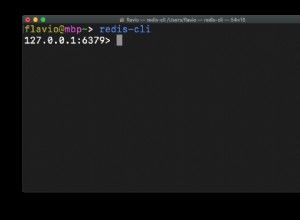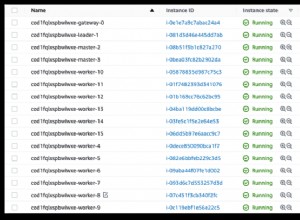Non immediatamente visibile ma possibile. Quello che devi fare qui è combinare il tuo documento di livello superiore con la serie di commenti senza duplicarlo. Ecco un approccio per unire prima il contenuto come due array in un array singolare, quindi $unwind
per raggruppare il contenuto:
db.collection.aggregate([
{ "$group": {
"_id": "$_id",
"author": {
"$addToSet": {
"id": "$_id",
"author": "$author",
"votes": "$votes"
}
},
"comments": { "$first": "$comments" }
}},
{ "$project": {
"combined": { "$setUnion": [ "$author", "$comments" ] }
}},
{ "$unwind": "$combined" },
{ "$group": {
"_id": "$combined.author",
"votes": { "$sum": "$combined.votes" }
}},
{ "$sort": { "votes": -1 } }
])
Che dà l'output:
{ "_id" : "Jesse", "votes" : 148 }
{ "_id" : "Mirek", "votes" : 135 }
{ "_id" : "Leszke", "votes" : 13 }
Anche saltando il primo $group
stage e creare un array combinato in un modo diverso:
db.collection.aggregate([
{ "$project": {
"combined": {
"$setUnion": [
{ "$map": {
"input": { "$literal": ["A"] },
"as": "el",
"in": {
"author": "$author",
"votes": "$votes"
}
}},
"$comments"
]
}
}},
{ "$unwind": "$combined" },
{ "$group": {
"_id": "$combined.author",
"votes": { "$sum": "$combined.votes" }
}},
{ "$sort": { "votes": -1 } }
])
Questi usano operatori come $setUnion
e persino $map
che sono stati introdotti a partire da MongoDB 2.6. Questo lo rende più semplice, ma può ancora essere fatto nelle versioni precedenti prive di quegli operatori, seguendo più o meno gli stessi principi:
db.collection.aggregate([
{ "$project": {
"author": 1,
"votes": 1,
"comments": 1,
"type": { "$const": ["A","B"] }
}},
{ "$unwind": "$type" },
{ "$unwind": "$comments" },
{ "$group": {
"_id": {
"$cond": [
{ "$eq": [ "$type", "A" ] },
{
"id": "$_id",
"author": "$author",
"votes": "$votes"
},
"$comments"
]
}
}},
{ "$group": {
"_id": "$_id.author",
"votes": { "$sum": "$_id.votes" }
}},
{ "$sort": { "votes": -1 } }
])
Il $const non è documentato ma è presente in tutte le versioni di MongoDB in cui è presente il framework di aggregazione (da 2.2). MongoDB 2.6 introdotto $literal
che essenzialmente si collega allo stesso codice sottostante. È stato utilizzato in due casi qui per fornire un elemento modello per un array o come introduzione di un array per rilassarsi al fine di fornire una "scelta binaria" tra due azioni.




